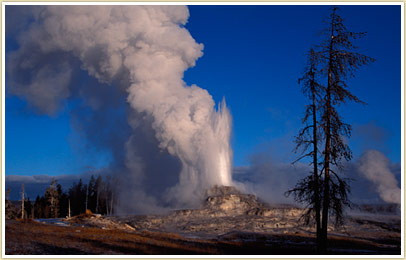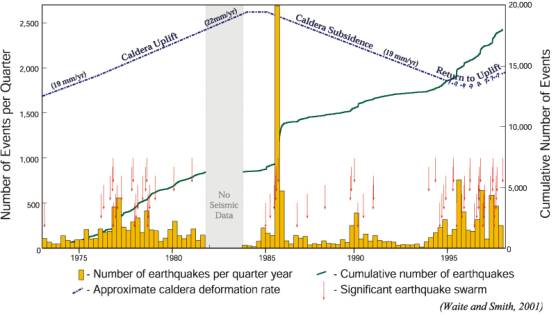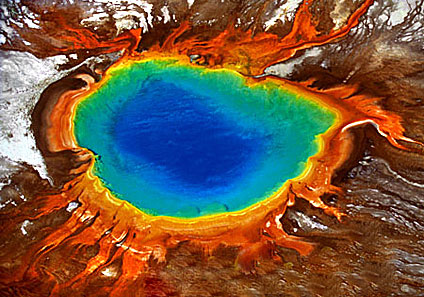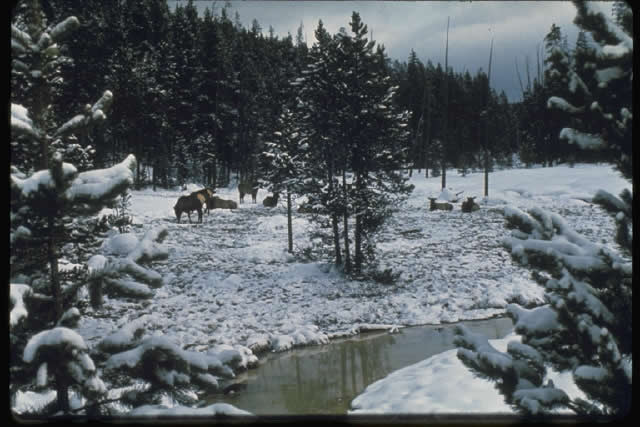Yellowstone National Park. Besides being the world's first national park, Yellowstone is also teeming with wildlife, gorgeous landmarks and views, and a place for a fun family vacation. Right?
Beneath Yellowstone National Park is one of the most dangerous things on our planet.
Is it a kind of bacteria or virus? No. Is it a toxic species of animal? Wrong again. As you walk peacefully down the boardwalk to Old Faithful, (one of the largest and most talked about geysers in the world) sipping from your water bottle on a hot Yellowstone day, do you know what's below your feet? Deeper down than the dirt and insects and hot water from the geysers, there is also a super volcano, one of the largest in the world.
The Yellowstone Caldera.
The Yellowstone Caldera is a volcanic caldera located in Yellowstone National Park, mostly in the northwest corner of Wyoming and extending into eastern Idaho. The caldera is measuring about 55 kilometers (34 miles) by 72 kilometers (45 miles).
Now you must be wondering, what is a caldera? It is a large depression at the top of a volcano, or in the Yellowstone caldera???s case, a super volcano. A caldera is caused by collapse or explosion.
Let's look into the Yellowstone Caldera case more closely now. Scientists say the activity in this super volcano is increasing and shifting more than usual, ready to blow its top. Although the volcano was due to blow a few hundred years ago, and hasn't blown yet, researchers aren't worried at the moment. Super Volcanoes can sleep centuries or even an millennium before producing incredibly massive eruptions that would dump lava and ash over many continents. For the past 17 years, scientists have used GPS to monitor the horizontal and vertical movements of the Yellowstone Caldera (which, by the way, was formed more than 600,000 years ago by a super eruption).
The movement of the caldera indicates what's going on underground where magma, or molten rock, is stored for the next eruption. When magma builds up, some of it starts to rise toward the surface, where it presses against the floor of the caldera. The pressure makes the caldera bulge, while a decrease in pressure makes it sink.
Data shows that the Yellowstone caldera's floor sank 4.4 inches from 1987 to 1995. From 1995 to 2000, the northwest rim of the caldera rose about 3 inches, followed by another 1.4 rise and a 1.2 decrease between 2000-2003.
And then the big movement came. From 2004 to 2006, central caldera floor rose faster than ever recorded before, springing up 7 inches during a three-year span. Now scientists started talking.
What is it that makes this super volcano in Yellowstone National Park so dangerous? If the super volcano did blow, then what would happen that would be so catastrophic?
"If there is an eruption, larger than Mt. St. Helens, we would need at least a years supply worth of food, because no food could be grown. Farmlands would be useless, and temperatures would drop more than 15 degrees. Within three months, clouds would cover the entire world. Millions of people would die, most within the surrounding 100 miles of the caldera. Fewer people would die from inhalation of ash as it spreads mostly East and South from the caldera in widening circles around the area. The country could not handle this event. The U.S economy would come to a halt. Grocery stores would empty out; airlines, trains, buses and roads would stop."
Yet even though these things are very scary, the volcano should not blow in most of our lifetime's or even generations to come. This super volcano should not stop you from visiting Yellowstone National Park if you want, because the park itself is not dangerous. Quite frankly, it's beautiful.
Here are some pictures!

This is a geyser in Yellowstone. Geyers are heat vents for volcanos.

Ths graph shows the rise and fall of the Yellowstone Caldera.

This image shows the levels of heat in and around the hot pool.
Now, here are two pictures of some of the landscapes in Yellowstone National Park.

This is the lower falls.

This is the Mammoth Hot Springs and Terraces.
Finally, here are some elk in winter time at Yellowstone.

So now you know a little more about the Yellowstone Caldera. Look up more information on it I dare you. Although I could not put as much information as I wanted to in this article, (it would be far too long). There is much more to learn about this super volcano, all of it very interesting. Do you have any of your own theories about the caldera? Any thoughts?
Post in the BBS!
It's been fun learning more about the Yellowstone caldera, and I hope you do look up more facts about it. You can do random searches on Google such as "Yellowstone Caldera" and "Yellowstone Super volcano."
So long for now,
Glitsygrl
Sources: Reference books: Dictionary, encyclopedia; Websites: www.earthmountainview.com/yellowstone/yellowstone.htm and www.msnbc.msn.com/id/17629668/; And my favorite source: My father.